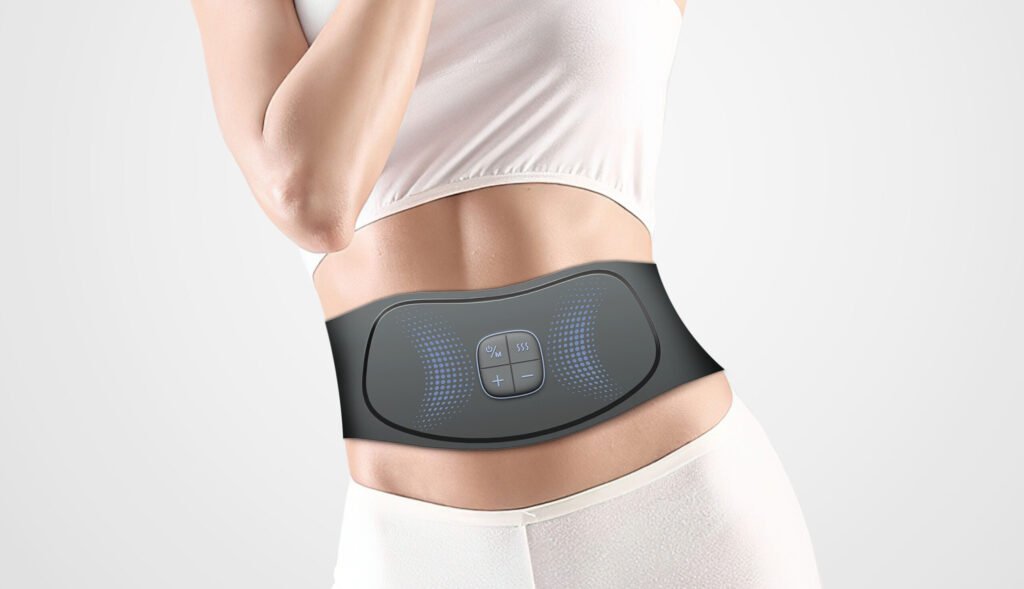Many people struggle with slow progress in their fitness journeys. Traditional workouts require consistency, time, and effort to see visible results. But what if there was a way to activate more muscles in less time? EMS (Electrical Muscle Stimulation) training suits claim to offer a shortcut to improved strength, fat loss, and muscle recovery.
EMS training suits use electrical impulses to enhance muscle contractions, leading to increased muscle activation, faster fat loss, and better recovery compared to traditional workouts.
Are EMS suits the future of fitness? Let’s explore their benefits, science, and limitations to find out.
Key Takeaways
- Enhanced Muscle Activation – Stimulates deeper muscle fibers than traditional exercises.
- Faster Fat Loss – Boosts metabolism and increases calorie burn.
- Quicker Recovery – Reduces soreness and aids in rehabilitation.
- Time Efficiency – Delivers results in shorter workout sessions.
- Safety Considerations – Not suitable for everyone; medical consultation is recommended.

How EMS Training Suits Work?
EMS training is not a new concept. It has been used in physiotherapy and athletic training for decades. But how does it work when incorporated into a full-body suit?
EMS suits use controlled electrical impulses to stimulate muscles, mimicking natural contractions. This leads to greater muscle engagement and a more intense workout without the need for heavy weights.
The Science Behind EMS Training
In a traditional workout, muscle contractions occur through signals from the brain. However, EMS bypasses the nervous system and directly stimulates muscles with low-frequency electrical pulses. This results in:
- Higher muscle recruitment – More muscle fibers are activated simultaneously.
- Deeper contractions – Even smaller stabilizing muscles get worked.
- Less strain on joints – Ideal for injury prevention and rehabilitation.
How Does an EMS Suit Compare to Conventional Exercise?
| Feature | Traditional Training | EMS Training |
|---|---|---|
| Muscle Activation | Voluntary only | Involuntary & voluntary |
| Time Required | 45-60 mins per session | 20 mins per session |
| Equipment Needed | Weights & machines | Just the EMS suit |
| Recovery Time | Longer | Faster |

Benefits of Using an EMS Training Suit
Improved Muscle Strength and Toning
Gaining muscle requires intense stimulation, and EMS offers a unique advantage.
EMS training enhances muscle contractions, activating both slow and fast-twitch fibers simultaneously. This leads to faster strength gains and improved muscle tone.
How Does EMS Compare to Strength Training?
- Traditional Strength Training – Works muscles through repetitive resistance movements.
- EMS Training – Activates muscles at a deeper level with electrical impulses, requiring less mechanical effort.
A study published in the European Journal of Applied Physiology found that participants using EMS alongside conventional resistance training showed greater strength improvements than those who only did resistance training.
Faster Fat Burning and Weight Loss
Many people turn to EMS for fat loss. But does it work?
EMS training increases metabolic activity, promoting higher calorie expenditure even after the workout ends. This makes it an effective tool for fat burning.
Evidence Supporting Fat Loss with EMS
- A 6-week study by the Journal of Strength & Conditioning Research found that EMS users had an increased metabolic rate, contributing to fat loss.
- Research in the Journal of Sports Science & Medicine reported that EMS improved body composition in overweight individuals.
EMS can help with weight loss when combined with proper nutrition and a balanced fitness routine.
Enhanced Recovery and Rehabilitation
EMS is widely used in physiotherapy and sports rehabilitation.
It helps reduce muscle soreness, improve circulation, and accelerate recovery after intense workouts or injuries.
How EMS Supports Recovery
- Increases blood flow – Enhances oxygen delivery and reduces stiffness.
- Prevents muscle atrophy – Beneficial for post-surgery patients.
- Speeds up healing – Helps repair muscle damage quicker.
Professional athletes often use EMS to stay in peak condition while minimizing injury risk.
Time Efficiency and Convenience
One of the biggest advantages of EMS training is its time-saving aspect.
A 20-minute EMS workout can provide the same benefits as a 90-minute conventional workout.
Who Benefits Most from EMS?
- Busy professionals – Ideal for those who have limited time to work out.
- Individuals recovering from injuries – Provides low-impact muscle activation.
- Athletes – Used to enhance strength and endurance efficiently.

Potential Limitations and Considerations
While EMS suits offer numerous benefits, they are not suitable for everyone.
People with pacemakers, heart conditions, epilepsy, or pregnancy should avoid EMS training. Consultation with a healthcare professional is advised before starting.
Possible Risks and Side Effects
| Risk | Explanation |
|---|---|
| Muscle Fatigue | Overuse can lead to excessive soreness. |
| Skin Irritation | Some users experience discomfort from the electrodes. |
| Improper Use Risks | High-intensity EMS without proper guidance can cause muscle strain. |
EMS is not a magic solution—it works best when used correctly and combined with a healthy lifestyle.
Conclusion
EMS training suits provide an effective way to enhance muscle strength, accelerate fat loss, and speed up recovery. They are particularly beneficial for people looking for efficient workouts with minimal time commitment.
However, they are not a replacement for traditional exercise. When used correctly, EMS training can be a valuable addition to any fitness routine.
If you’re considering EMS, consult a professional to ensure safe and effective usage.
FAQs
1. Is EMS training safe?
Yes, EMS training is safe when used properly. However, people with medical conditions should consult a doctor before using EMS.
2. Can EMS replace traditional workouts?
No, EMS should complement, not replace, traditional exercise. It enhances muscle activation but does not provide all the benefits of movement-based workouts.
3. How often should I use an EMS suit?
Most experts recommend 1-2 sessions per week to allow muscles to recover properly.
4. Do EMS suits help with weight loss?
Yes, EMS increases metabolism and enhances fat-burning, but it should be combined with a healthy diet for optimal results.
5. Can anyone use an EMS training suit?
No, people with heart conditions, pacemakers, epilepsy, or pregnancy should avoid EMS training.
6. Do EMS workouts cause pain?
EMS workouts should not be painful. Users may feel intense muscle contractions, but it should not be uncomfortable. If pain occurs, intensity should be adjusted.
7. How long does it take to see results from EMS training?
Results vary, but most users notice improvements in muscle tone and strength within 4-6 weeks of consistent use.
8. Are EMS suits worth the investment?
If used consistently and correctly, EMS suits can be a valuable tool for fitness and recovery. However, they should be purchased from reputable brands to ensure quality and safety.
EMS training is a powerful fitness tool, but like any training method, its effectiveness depends on proper use. If you’re looking for a time-efficient way to improve strength, burn fat, and speed up recovery, an EMS training suit could be a game-changer.





